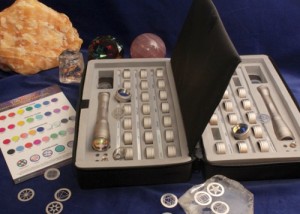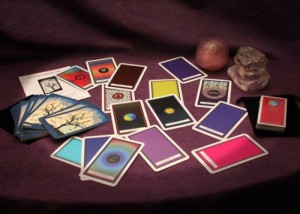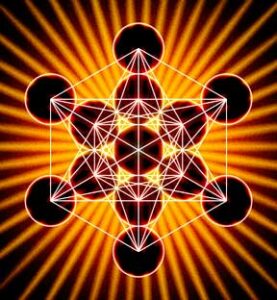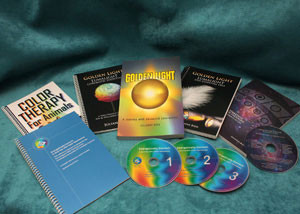When we gaze upon the vast blue ocean, the horizon pulls us in, where a cloudless blue sky meets the water. With its distinct properties, this sky-blue hue resonates with our inner explorers, compelling us to express our truths.
We see the ocean and sky as blue, yet we know it’s an illusion.
This is how our mind translates light’s interaction through eyesight.
Colorful lights spark our curiosity, tempting us to uncover the mysteries of the skies.
Learn why: Color light therapy is mystical.
Here are a few insights into Sky Blue.
![]()
#1. Sunlight creates the mystical around us.

Like a kaleidoscope, each of the seven color bands of the visible spectrum individually shifts and blends from lighter to darker shades.
Undoubtedly, it’s a captivating dance adjusting the sunlight needs of the seasons, leaving us in awe of Nature’s artistry.
As for the moon, it’s not just a celestial body, but a guiding light that leads us through its four phases, or 360 days, as the ancients believed. It’s a cosmic compass, pointing us towards the sky’s living colors from sunrise to sunset, enlightening us about the ever-changing Nature of our surroundings.
While our mind perceives the cloud-like formations in the sky, the blues we see are merely an illusion, a result of how light interacts with the particles in the air.
Unsurprisingly, this captivating phenomenon, known as Rayleigh scattering, is the enchanting reason behind the sky’s blue appearance, or as our learned belief system has named it, Sky Blue.
For instance, words like red and green may conjure images of apples or roses. Meanwhile, the sky’s blue, with its subtle allure, hints at celestial secrets hidden in its light shades of blue, inviting us to explore during life’s journey.
Language is forever expanding with color terms to name things.
Learn more: The sun’s impact brings all of Nature to life.
![]()
#2. True blue in nature, art, and literature.
 Take a moment to imagine a broader perspective, envision the four points of the Earth’s compass, and appreciate the shades of blue pigments everywhere on land, in the air, and at sea.
Take a moment to imagine a broader perspective, envision the four points of the Earth’s compass, and appreciate the shades of blue pigments everywhere on land, in the air, and at sea.
For example, the light blue pigment is known as biliverdin. Birds such as American Robins, Blue Jays, and Starlings produce it when laying their eggs.
Consider other awe-inspiring adaptations in Nature. For instance, animals like blue whales, iguanas, tropical fish, and certain birds have evolved structures in their skin, scales, or feathers that reflect blue light.
Even in the insect world, the apparent blue on butterfly and dragonfly wings results from reflective crystalline scales. Furthermore, photosynthetic blue-green algae contain a blue pigment called phycobilin.
Yet, Nature continues to surprise us with exceptions like the olive-wing butterfly. It produces a blue pigment, which scientists are still trying to understand. The butterfly’s color comes from its unique structure and how it scatters light, showing Nature’s incredible artistry.
Other lighter blue gemstones and minerals, like aquamarine, lapis lazuli (which, when ground, produces ultramarine pigment), and sodalite, further deepen this connection.
Indeed, even the myriad of blue-identified words in literature beautifully mirrors human Nature and emotions, just as there are countless blue shades and tones on an artist’s palette.
Sun-inspired hues are elements of Nature’s alchemical secrets.
Learn more: Spectrahue Universal Tarot and Light Language.
![]()
#3. Blue lights have an uplifting feel.

Understanding the intricate relationship between moon phases, the sun, and our natural dependency on an atmosphere of sky-blue light can help us make informed decisions about using technology.
Sky Blue, with its captivating effect on our emotions, also plays a vital role in regulating our internal rhythms, promoting restful sleep and overall wellness. Ongoing research is shedding more light on the psychological effects of blue light, particularly the high-energy visible light in the Sky Blue range. It’s worth noting that it can enhance alertness and uplift mood.
Unsurprisingly, too little exposure, as in the fall and winter months, can cause the depressive symptoms of Seasonal Affective Disorder (SAD). SAD calls for ‘full-spectrum white light’ sessions, while less intense LED blue light might be helpful.
Remember that too much exposure to artificial blue light, especially from digital devices close to bedtime, can disrupt our natural cycles. The good news is that there are special eyeglasses with yellow lenses that filter out blue light.
Learn more: Color light therapy in a metaphysical practice.
![]()
#4. True blue inspiration is always heartfelt.

In conclusion, as there are countless variations in the visible spectrum, surrounding ourselves with plenty of Sky Blue can help clear our minds of old ideas and inspire new ones. However, it’s up to us to bring about this change.
Here’s a tip: Sky Blue has been associated with the Throat Chakra and its intuitive abilities. This energy center can facilitate a more profound connection during meditation.
For example, inner hunches may surface, leading to an answer to a hopeful thought. For those who use color therapy in their spiritual routine, a session with Sky Blue light or visualizing it may provide deeper self-awareness.
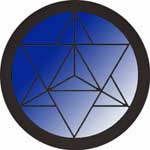 Since ancient times, rich shades of blue have been prominent in art, ornaments, and decorations. During the Renaissance, the stone lapis lazuli produced the ultramarine pigment.
Since ancient times, rich shades of blue have been prominent in art, ornaments, and decorations. During the Renaissance, the stone lapis lazuli produced the ultramarine pigment.
Let’s explore Indigo, a deep blue with a touch of violet.
Here are the journey’s links: Light in Time, Red, Orange, Yellow, Green, Sky Blue, Indigo Blue, Violet, and Pink/Magenta.
![]()
© 2018 Spectrahue Light & Sound Inc. All rights reserved. No medical claims are made or implied. The opinions expressed are based solely on the author’s viewpoint and studies. This material is for informational purposes only.


